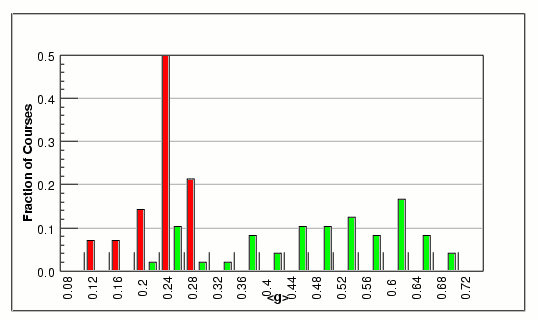|
|
"Learning" without understanding
-
Some students work hard and yet just don't "get it."
-
Students can do very well on standard physics problem-solving exams and
yet do very poorly conceptual test (Halloun,
Mazur).
-
Most students enter introductory physics with views of the way the world
works that more resemble Aristotle's physics than current understanding.
-
These misconceptions are resistant to change an impede student learning.
-
Misconceptions are best dealt with through cognitive conflict and/or conceptual
bridging; "telling" seldom works
The Force Concept Inventory
-
A 30 question multiple choice test that measures student's beliefs about
Force and Motion.
-
Focus on common misconceptions (e.g. motion implies force).
-
The developers suggest that a score
above 70% implies a fairly consistent Newtonian (accepted physics) viewpoint.
-
The test is administered at the beginning of the semester and then again
at the end to measure improvement from instruction.
-
Learning gain:
| <g> = |
< posttest score %> - < pretest score %> |
| < 100 %> - < pretest score %> |
Richard Hake conducted a large-scale study
that found a strong relationship between learning gain on the FCI and instructional
method. Most classes in which lecture was the dominate teaching approach
had gains around 0.2 (low 20's in percentage gain) or even less, while most classes using interactive
engagement methods generally saw much higher gains. Learning gains on the FCI
depend more on the method of instruction than who the instructor is.
 gain on FCI
gain on FCI
|
| |
Traditional instruction |
| |
Interactive Engagement instruction |
|
|